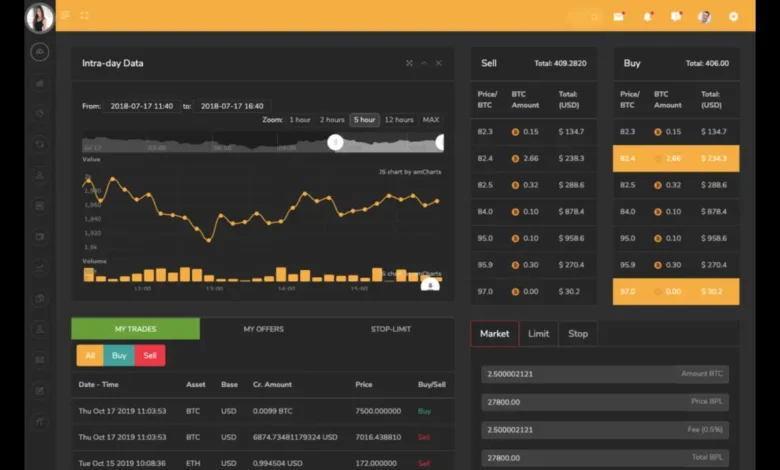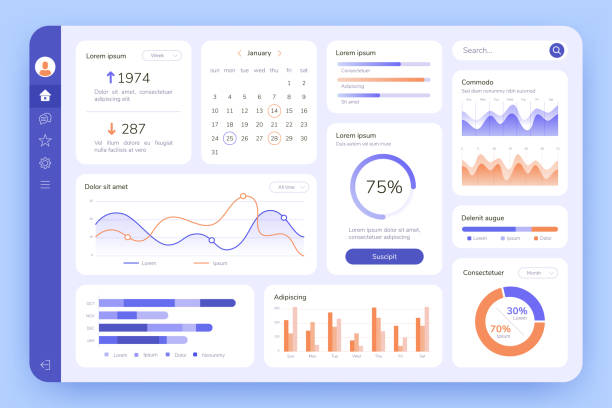
Introduction
In today’s fast-paced business environment, managing the supply chain efficiently is crucial for businesses to stay competitive. One essential tool that helps in this process is a Supply Admin Panel. This article explores the significance of a Supply Admin Panel, its features, benefits, challenges, and tips for successful implementation.
What is a Supply Admin Panel?
A Supply Admin Panel is a centralized platform that allows businesses to manage their supply chain activities efficiently. It provides real-time visibility into inventory levels, order status, and supplier performance. It also helps in streamlining communication with suppliers and optimizing the procurement process.
Importance of a Supply Admin Panel
A Supply Admin Panel plays a crucial role in ensuring smooth operations in the supply chain. It helps businesses in:
- Inventory Management: Keeping track of inventory levels in real time helps in preventing stockouts and overstocking.
- Order Processing: Streamlining the order processing system leads to faster order fulfillment and improved customer satisfaction.
- Supplier Management: Monitoring supplier performance and maintaining good relationships with them is essential for the smooth functioning of the supply chain.
- Data Analytics: Analyzing data related to supply chain activities helps identify areas for improvement and make informed decisions.
Features of an Effective Supply Admin Panel

An effective Supply Admin Panel should have the following features:
- Real-time Visibility: Provides real-time updates on inventory levels, order status, and supplier performance.
- Integration Capabilities: Integrates seamlessly with other systems, such as ERP and CRM systems.
- Customization: Allows users to customize the platform according to their specific requirements.
- Security: Ensures data security and compliance with regulations such as GDPR and CCPA.
- Scalability: Can scale up or down according to the needs of the business.
How to Choose the Right Supply Admin Panel
When choosing a Supply Admin Panel, businesses should consider the following factors:
- Ease of Use: The platform should be user-friendly and intuitive.
- Integration Capabilities: It should integrate seamlessly with other systems.
- Scalability: It should be able to scale up or down according to the needs of the business.
- Cost: The platform should be cost-effective and offer good value for money.
- Customer Support: The provider should offer reliable customer support.
Benefits of Using a Supply Admin Panel
Using a Supply Admin Panel offers several benefits, including:
- Improved Efficiency: Streamlines supply chain activities, leading to improved efficiency.
- Cost Savings: Reduces costs associated with inventory management and order processing.
- Better Decision Making: Provides real-time data for informed decision-making.
- Enhanced Customer Satisfaction: Ensures faster order fulfillment and better customer service.
Challenges of Implementing a Supply Admin Pane l
Implementing a Supply Admin Panel can be challenging due to factors such as:
- Resistance to Change: Employees may resist using the new system due to fear of change.
- Integration Issues: Integrating the new system with existing systems can be complex.
- Cost: Implementing a Supply Admin Pane l can be costly, especially for small businesses.
Tips for Successful Implementation
To ensure the successful implementation of a Supply Admin Pane l, businesses should:
- Communicate Effectively: Communicate the benefits of the new system to employees to gain their buy-in.
- Provide Training: Provide training to employees on how to use the new system effectively.
- Start Small: Start with a pilot project before rolling out the new system company-wide.
- Monitor Progress: Continuously monitor the implementation process and make adjustments as needed.
Case Studies: Successful Implementation of Supply Admin Panels
Several businesses have successfully implemented Supply Admin Panels and have seen significant improvements in their supply chain operations. For example, Company X implemented a Supply Admin Pane l and saw a 30% reduction in inventory holding costs.
Future Trends in Supply Admin Panels
The future of Supply Admin Pane ls looks promising, with advancements in technology such as AI and IoT. These technologies will further enhance the capabilities of Supply Admin Pane ls, making supply chain management even more efficient.
Conclusion
In conclusion, a Supply Admin Pane l is a valuable tool for businesses looking to streamline their supply chain operations. By choosing the right platform and following best practices for implementation, businesses can reap the benefits of improved efficiency, cost savings, and better decision-making.
FAQs
- What is a Supply Admin Panel?
- A Supply Admin Panel is a centralized platform that allows businesses to manage their supply chain activities efficiently.
- What are the benefits of using a Supply Admin Pane l?
- Using a Supply Admin Pane l offers several benefits, including improved efficiency, cost savings, better decision-making, and enhanced customer satisfaction.
- What are the challenges of implementing a Supply Admin Panel?
- Challenges of implementing a Supply Admin Pane l include resistance to change, integration issues, and cost.
- How can businesses choose the right Supply Admin Panel?
- Businesses can choose the right Supply Admin Panel by considering factors such as ease of use, integration capabilities, scalability, cost, and customer support.
- What are the future trends in Supply Admin Pane ls?
- Future trends in Supply Admin Pane ls include advancements in technology, such as AI and IoT, which will further enhance their capabilities.
you may also read
Clevo PA71: A Comprehensive Review